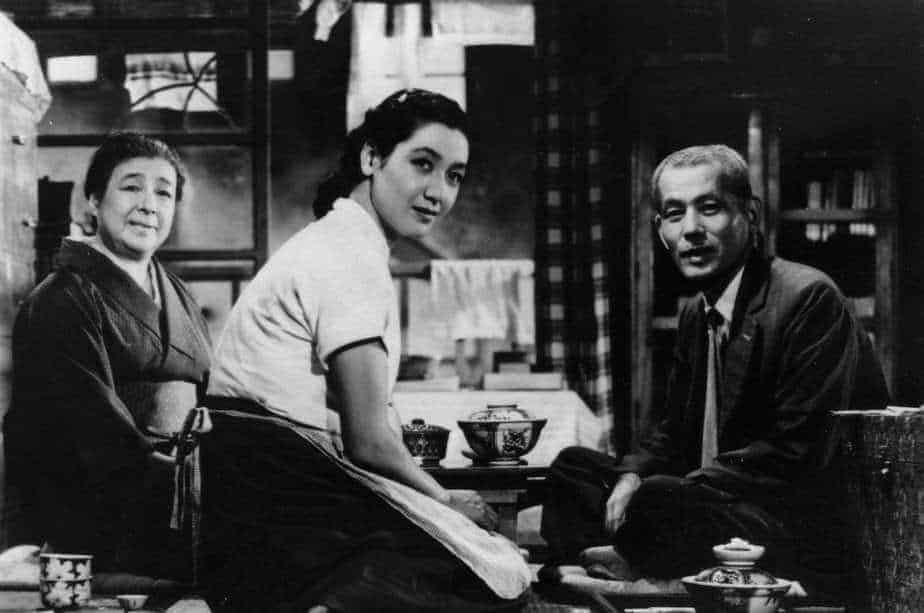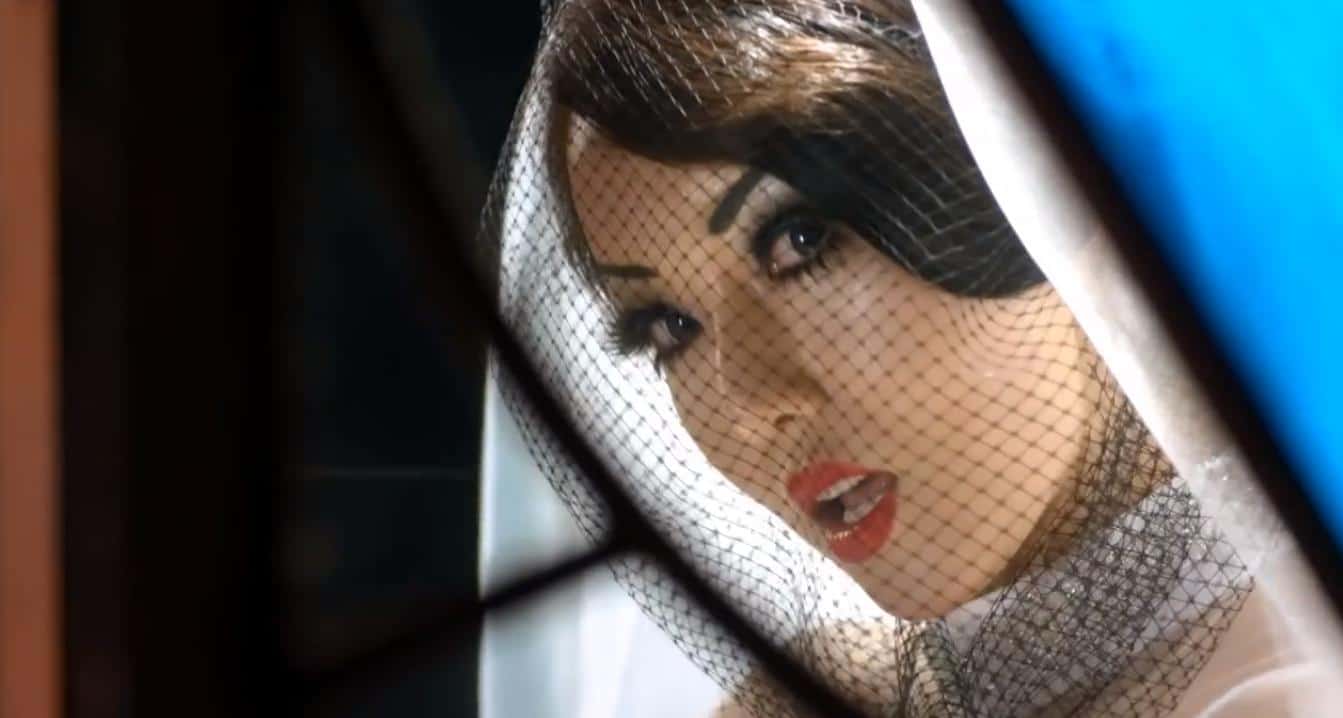In discussing the statement ‘Ozu is the most Japanese of all directors' it is worth noting that Japanese intellectuals at the end of World War II had a “desire to understand why Japanese people, especially intellectuals, had been so willing to accept” (Hein, 2011, p.94) a nationalistic militarism leadership. The intellectuals saw “their task as re-shaping Japanese society […] that would protect it against fascism”. (Hein, 2011, p.94). The art-critic Hijikata Teiichi thought that after “the disastrous war […] the Japanese state domestically and the Japanese people as individuals both” (Hein, 2011, p.98) had to develop independence. A move towards individual independence was that in the December after the war, women gained the right to vote. The following year in April 1946, “thirty-nine women were elected to the upper house of the Diet.” (Katzoff, 1998, p.10). The popular magazine for women Fujin kôron published an article by the socialist-feminist Amakawa Kikue who “presented women's suffrage as the symbol of freedom of speech for both women and men […] Urging women to act now and understand later”. (Katzoff, 1998, p.10). The Potsdam Proclamation of July 26, 1945, the U.S Initial Post-Surrender Policy for Japan of September 22, 1945 came in to existence. The American occupation of Japan after the war meant an “unfinished engagement with the West” (Phillips, 2014, p.163). For the older Japanese generation, Americanism could be read as a direct “dilution of the cultural essence of Japanese folk” (Phillips, 2014, p.157).
Buy This Title
Alastair Phillips points to the fact “that many Japanese thinkers were […] aware that Japan's modernity […] was constantly being mediated by a comparison to the West” (Phillips, 2014, p.157). It has been argued the film maker Ozu Yasujiro's style of film making showed a rejection of Western-filmic values, by consciously breaking with Hollywood conventions. Japan has a long history of art that integrates life and nature. It is within this history of art that a link to traditional Japanese haikus and haboku can be found in Ozu's transitional shots between character scenes. Ozu generally used three individual shots that either depicted cities or landscape. It is the symmetry of these shots that is “reminiscent of Japanese brush painting” (McDonald, 1982, p.20). Ozu's decorative montage transitions not only appealed, but were also understood by a Japanese audience. The shots offered new modes of thought with which to consider character relationship between location and subjectivity. They become containers for both emotion and the viewers response. To the Western-eye, these decorative shots seem inharmonious and any greater meaning is lost. The critic Tsunoe Hazumi remarked “Ozu's world is one of stillness” (Tucker, 1973, p.53). The scholar Kakuzo Okakura had this to say: “Any history of Japanese art-ideals is, then, almost an impossibility, as long as the Western world remains so unaware of the varied environment and interrelated social phenomena into which that art is set, as if it were a jewel. Definition is limitation. The beauty of a cloud or a flower lies in its unconscious unfolding of itself, and the silent eloquence of the masterpieces of each epoch must tell their story better than any epitome of necessary half-truths.” (Okakura, K., p.13). Perhaps it is the West's inability to find any meaning in stillness and it is this fact that makes Ozu the most Japanese of all directors, as he fully employs a stillness. The transitional montage shots “from exterior to interior to human figures is thematically significant because it reveals the basic philosophical concept inherent in Ozu's films: Unity between man and his surroundings” (McDonald, 1982, p.23). Tucker goes on to state that “One of the great difficulties for the non-Japanese viewer of Japanese films is the recognition of a set of visual and aural signals that seem to fit the criteria by which we judge our daily experience” (Tucker, 1973, p.48).
Ozu's “Tokyo Story (Tokyo Story, Dir. Ozu. Y., 1953), crafted together with the scriptwriter Noda Kogo, the cinematographer Atsuta Yuharu and the set designer Hamada Tatsuo, speaks directly of the concerns of modernity and changes within the family. The film focuses on the “effect of domestic turbulence on individual family members […] subtle confrontations […] within the context of daily life.” (McDonald, 1982, p.20). Tokyo Story tells the story of one middle class family. Ozu's concerns were with the complex nature of Japanese people, the Japanese family and home life. The film theorist Richard N. Tucker suggests “The action that most characterizes the traditional middle class is the lack of action”. (Tucker, 1973, p.47). It is this lack of action that Ozu turns into an art form, allowing the gravity of the emotion to sink in, giving us time to respond to it.
Watching “Tokyo Story” today gives the feeling of viewing a lush historical artefact. Quietly, Tokyo Story places the viewer amidst the question “what it means to be a citizen of Japan”. (Phillips, 2014, p.163).

The two main characters in “Tokyo Story” are an old couple, Shikuchi (Ryu,C.) and Tomi (Higashiyama, C.). The film starts with Shikuchi and Tomi preparing for a train journey. Japan's train infrastructure was going through a growth period at this time. There was also a drift of the populace to major urban centres such as Osaka and Tokyo. Shikuchi and Tomi's children had already moved away from their small town to live in Tokyo. “Tokyo Story” presents traditional Japanese values while at the same time silently pointing to the disjunctures in contemporaneity. The film has an overall poetic way of revealing the past and present, it communicates an objectivity and spirituality, whereby the “characters are the ones who say ‘Isn't life disappointing?' Ozu shows all those things that go to make up life, but the act of judgement is left to the audience”. (Tucker, 1973, p.56). Later in the film, Shikuchi and his friend Numata (Tono, E.) are sat drunk in a bar. Numata, talking about the younger generation, says “They lack ambition […] Young people today have no backbone – Where is their spirit?” (Dir. Ozu, Y., 1953). Shikuchi , moments later in the same conversation, answers. He is sat sideways on the bar stool and he looks into the camera and says “But we can't expect too much from our children – Times have changed. We have to face it” (Dir. Ozu, Y., 1953). The conversation has this timeless quality about it – it is a conversation that echoes throughout history – it has a typicality of two elderly people talking anywhere in the world. This however, seems to undermine the scene being culturally specific.
Ozu's treatment of human interaction demanded that the acting style was often unemphatic. Ozu employs silences throughout. In his book Japan: Film and Image, Richard N, Tucker notes that non-verbal communication is an area where the “Japanese excel […] they have a slight mistrust of the written word […] and […] mistrust of the spoken word”. (Tucker, 1973, p.18-19).
In “Tokyo Story”, the functioning of the actors “takes place in the spaces between people, in the minutiae of behaviour and the conflict of attitudes, often unspoken.” (Tucker, 1973, p.48). Throughout the movie, the characters are central, the buildings, streets and neighbourhoods are places where they pass through. These shots give the viewer glimpses of both traditional and modern geographical spaces. Neither space is given preferential treatment, they are not shown as extraordinary or charmed. This is the subtlety with which Ozu paints his film. It moves gently, like bamboo swaying in the wind.

A filmic practise Ozu also employed in “Tokyo Story” was the use of fixed camera positions, which he used to suggest Shikuchi and Tomi's sense of resignation. A deeper reflection rather than the characters' resignation, actually allows for “the transcendental quality of acceptance” (Tucker, 1973, p.53) to permeate. The characters “consciously taking life as it is […] knowing that one cannot change it, thus achieving a state of uplifted calm from that knowledge”. (Tucker, 1973, p.53). On the surface, it looks like the characters are saying: “Isn't life disappointing?” However, Ozu is in fact forcing the audience to make judgement. Under Ozu's artistic direction, camera shots were held “long after it […] seemed to say all that was necessary”. (Tucker, 1973, p.52). His reasoning behind this was that these long-held images with no further action demanded a response from the audience. The films diegetic space “allowing associations on a number of different levels” (Tucker, 1973, p.52) i.e. that Japanese people could see themselves through a Japanese lens rather than using Hollywood techniques.
The French essayist and social/literary critic Roland Barthes wrote in his seminal work ‘L'Empire des signes' that “the traditional Japanese house” (Michelson, 1979, p.14), with its concept of centre rejected, caused a “burning frustration for Western Man.” (Michelson, 1979, p.14). It offered no place from which the body could constitute itself as master of that space. That space would better be described as Mu, a void that Ozu understood and welcomed not only in “Tokyo Story” but also in other films he would make. In Japanese society there is an awareness “of a deep inter-relationship between people and nature”. (Tucker, 1973, p.115). This is very much related to Buddhism which had travelled to Japan in the Chinese Tang dynasty. The influence of Buddhism, particularly Zen Buddhism on Ozu's approach to his film making, becomes apparent in the light of the concept of mu, the void, whose single character is the epitaph on Ozu's grave. Yoshida Kiju, in further trying to “explicate Ozu's deceptively simple cinematic universe” (Ehrlich, L. C., p.805) applies the term Anti-Cinema to describe “Ozu's refusal to indulge in the glamour of movie making and his refusal to fill the viewer's world with useless and gazes.
Bibliography:
Hein, L. E., Reckoning with War in the Museum, 2011, Critical Asian Studies 43:1 (Routledge) [accessed online: 29/10/2014]
Michelson, A., Ed., To The Distant Observer, 1979, (Scolar Press)
McDonald, K., Ozu's Tokyo Story: Simple Means for Complex Ends, 1982, The Journal of the Association of Teachers of Japanese, Vol. 17, No. 1, (American Association of Teachers of Japanese)
Okakura, K., The Ideals of the East, 2007, (Stone Bridge press)
Tucker, R. N., Japan: Film Image, 1973, (Studio Vista)
[Accessed online: 5/10/2014] Phillips, A., Pictures of the past in the present: modernity, femininity and stardom in postwar films of Ozu Yasujiro, http://screen.oxfordjournals.org/at University of Wales Bangor
[Accessed online: 25/10/2014] Social Science Japan, http://newslet.iss.u-tokyo.ac.jp/ssj12/ssj12.pdf,
Filmography:
Yasujiro, O. Tokyo Story, 1953















